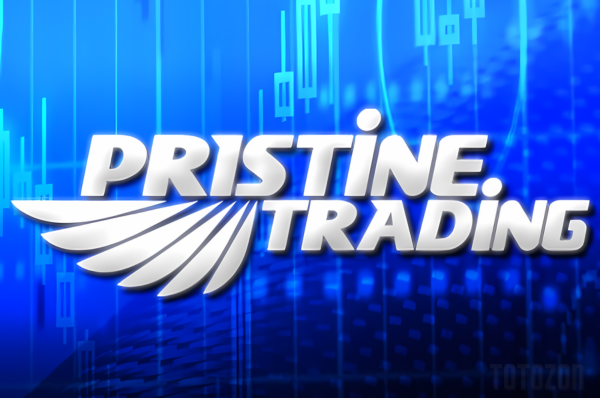-
×
 High Probability Trading Using Elliott Wave And Fibonacci Analysis withVic Patel - Forex Training Group
1 × $10.00
High Probability Trading Using Elliott Wave And Fibonacci Analysis withVic Patel - Forex Training Group
1 × $10.00 -
×
 0 DTE Options Trading Workshop with Aeromir Corporation
1 × $15.00
0 DTE Options Trading Workshop with Aeromir Corporation
1 × $15.00 -
×
 Crypto Trading Academy with Cheeky Investor - Aussie Day Trader
1 × $13.00
Crypto Trading Academy with Cheeky Investor - Aussie Day Trader
1 × $13.00 -
×
 Crystal Ball Pack PLUS bonus Live Trade By Pat Mitchell - Trick Trades
1 × $20.00
Crystal Ball Pack PLUS bonus Live Trade By Pat Mitchell - Trick Trades
1 × $20.00 -
×
 White Phoenix’s The Smart (Money) Approach to Trading with Jayson Casper
1 × $39.00
White Phoenix’s The Smart (Money) Approach to Trading with Jayson Casper
1 × $39.00 -
×
 Order flow self-study training program with iMFtracker
1 × $10.00
Order flow self-study training program with iMFtracker
1 × $10.00 -
×
 Forecast 2024 Clarification with Larry Williams
1 × $15.00
Forecast 2024 Clarification with Larry Williams
1 × $15.00 -
×
 The Prop Trading Code with Brannigan Barrett - Axia Futures
1 × $23.00
The Prop Trading Code with Brannigan Barrett - Axia Futures
1 × $23.00 -
×
 Advanced Spread Trading with Guy Bower - MasterClass Trader
1 × $15.00
Advanced Spread Trading with Guy Bower - MasterClass Trader
1 × $15.00 -
×
 The Indices Orderflow Masterclass with The Forex Scalpers
1 × $23.00
The Indices Orderflow Masterclass with The Forex Scalpers
1 × $23.00 -
×
 The Complete Guide to Multiple Time Frame Analysis & Reading Price Action with Aiman Almansoori
1 × $13.00
The Complete Guide to Multiple Time Frame Analysis & Reading Price Action with Aiman Almansoori
1 × $13.00 -
×
 TradeCraft: Your Path to Peak Performance Trading By Adam Grimes
1 × $15.00
TradeCraft: Your Path to Peak Performance Trading By Adam Grimes
1 × $15.00 -
×
 Quantamentals - The Next Great Forefront Of Trading and Investing with Trading Markets
1 × $8.00
Quantamentals - The Next Great Forefront Of Trading and Investing with Trading Markets
1 × $8.00 -
×
 W. D Gann 's Square Of 9 Applied To Modern Markets with Sean Avidar - Hexatrade350
1 × $23.00
W. D Gann 's Square Of 9 Applied To Modern Markets with Sean Avidar - Hexatrade350
1 × $23.00
Ron Wagner – Creating a Profitable Trading & Investing Plan. 6 Key Components with Pristine
$4.00
File Size: Coming soon!
Delivery Time: 1–12 hours
Media Type: Online Course
Profitable Trading Plan with Ron Wagner: 6 Key Components
Introduction
In the fast-paced world of trading and investing, having a well-structured plan is crucial for success. Ron Wagner, a seasoned trader and educator at Pristine, shares his insights on creating a profitable trading and investing plan. In this article, we will explore the six key components of Wagner’s approach and how they can help you achieve financial success.
Understanding the Importance of a Trading Plan
Why a Trading Plan is Essential
A trading plan serves as a roadmap for your trading activities. It outlines your goals, strategies, and risk management techniques, ensuring that you remain disciplined and focused.
Benefits of a Structured Plan
A well-defined plan helps mitigate emotional decision-making, reduces the risk of significant losses, and increases the likelihood of consistent profits.
Component 1: Setting Clear Goals
Defining Your Objectives
Your trading goals should be specific, measurable, attainable, relevant, and time-bound (SMART). Whether it’s achieving a certain percentage return on investment or growing your trading account by a specific amount, clear goals provide direction.
Short-Term vs. Long-Term Goals
Differentiate between short-term and long-term goals. Short-term goals might involve weekly or monthly targets, while long-term goals focus on annual performance or overall financial growth.
Component 2: Choosing the Right Markets
Market Selection Criteria
Not all markets are suitable for every trader. Wagner emphasizes selecting markets based on factors like volatility, liquidity, and personal familiarity.
Diversification
Diversifying your investments across various markets can reduce risk. Consider trading stocks, commodities, forex, and other assets to balance your portfolio.
Component 3: Developing a Trading Strategy
Technical Analysis
Technical analysis involves studying price charts and using indicators to predict future price movements. Wagner highlights the importance of mastering tools like moving averages, RSI, and MACD.
Fundamental Analysis
Fundamental analysis focuses on evaluating a company’s financial health, economic indicators, and market conditions. Combining both technical and fundamental analysis can enhance your trading strategy.
Backtesting
Backtesting involves testing your strategy on historical data to evaluate its effectiveness. This step is crucial for refining your approach and identifying potential weaknesses.
Component 4: Risk Management
Setting Stop-Loss Orders
Stop-loss orders help protect your investments by automatically closing a trade at a predetermined loss level. Wagner advises setting stop-losses based on your risk tolerance and market conditions.
Position Sizing
Proper position sizing ensures that you do not risk too much on a single trade. Use a percentage of your total capital to determine the size of each position, balancing potential rewards with acceptable risk.
Diversification
Diversifying your trades across different assets and markets reduces the risk of significant losses. Avoid putting all your capital into one trade or market.
Component 5: Keeping a Trading Journal
Why Journal Your Trades?
A trading journal helps you track your trades, analyze performance, and identify patterns in your trading behavior. It is an invaluable tool for continuous improvement.
What to Include in Your Journal
Record details such as entry and exit points, trade rationale, outcome, and lessons learned. Reviewing your journal regularly can provide insights into your strengths and areas for improvement.
Component 6: Continuous Learning and Adaptation
Staying Informed
The financial markets are dynamic, and staying updated with the latest news, trends, and technologies is essential. Follow market news, attend webinars, and read trading books to keep your knowledge current.
Adapting to Market Changes
Markets evolve, and so should your trading plan. Be prepared to adjust your strategies based on market conditions, performance analysis, and new insights.
Mentorship and Community
Engage with other traders and seek mentorship from experienced professionals like Ron Wagner. Sharing knowledge and learning from others can accelerate your growth and success.
Conclusion
Creating a profitable trading and investing plan requires careful planning, disciplined execution, and continuous learning. Ron Wagner’s six key components provide a solid foundation for developing a plan that can lead to consistent success. By setting clear goals, choosing the right markets, developing robust strategies, managing risk effectively, maintaining a trading journal, and staying adaptable, you can enhance your trading performance and achieve your financial objectives.
Commonly Asked Questions:
- Business Model Innovation: Accept the truth of a legitimate business! Our strategy is organising a group buy in which participants share the costs. We use these cash to acquire popular courses from sale pages and make them available to people with limited financial resources. Despite the authors’ worries, our clients love the cost and accessibility we give.
- The Legal Environment: Yes or No The legality of our activity is ambiguous. While we don’t have specific permission from the course authors to resell the material, there is a technicality at work. The author did not specify any limits on resale when purchasing the course. This legal intricacy is both an opportunity for us and a boon for individuals looking for low-cost access.
- Quality Control: Uncovering the Truth
Getting to the heart of the issue – quality. Purchasing the course straight from the sale page guarantees that all documents and resources are the same as those obtained through traditional channels.
However, we distinguish ourselves by going beyond personal research and resale. It is crucial to note that we are not the official course providers, which means that the following premium services are not included in our package:
- There are no scheduled coaching calls or sessions with the author.
- Access to the author’s private Facebook group or web portal is not permitted.
- No access to the author’s private membership forum.
- There is no direct email support available from the author or their team.
We operate independently, with the goal of bridging the pricing gap without the extra services provided by official course channels. Your comprehension of our distinct approach is much appreciated.
Be the first to review “Ron Wagner – Creating a Profitable Trading & Investing Plan. 6 Key Components with Pristine” Cancel reply
You must be logged in to post a review.
Related products
Forex Trading
Forex Trading
Forex Trading
Forex Trading
The Complete Guide to Multiple Time Frame Analysis & Reading Price Action with Aiman Almansoori
Forex Trading
Forex Trading
Quantamentals – The Next Great Forefront Of Trading and Investing with Trading Markets
Forex Trading
Forex Trading
Forex Trading
Forex Trading
Forex Trading
Forex Trading
















Reviews
There are no reviews yet.